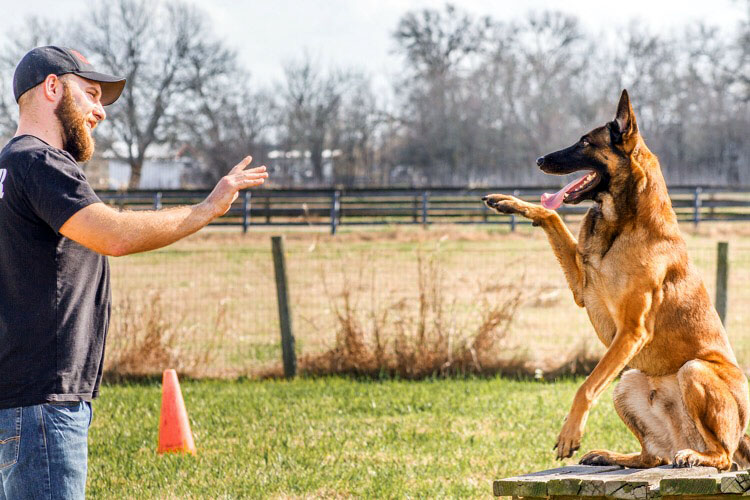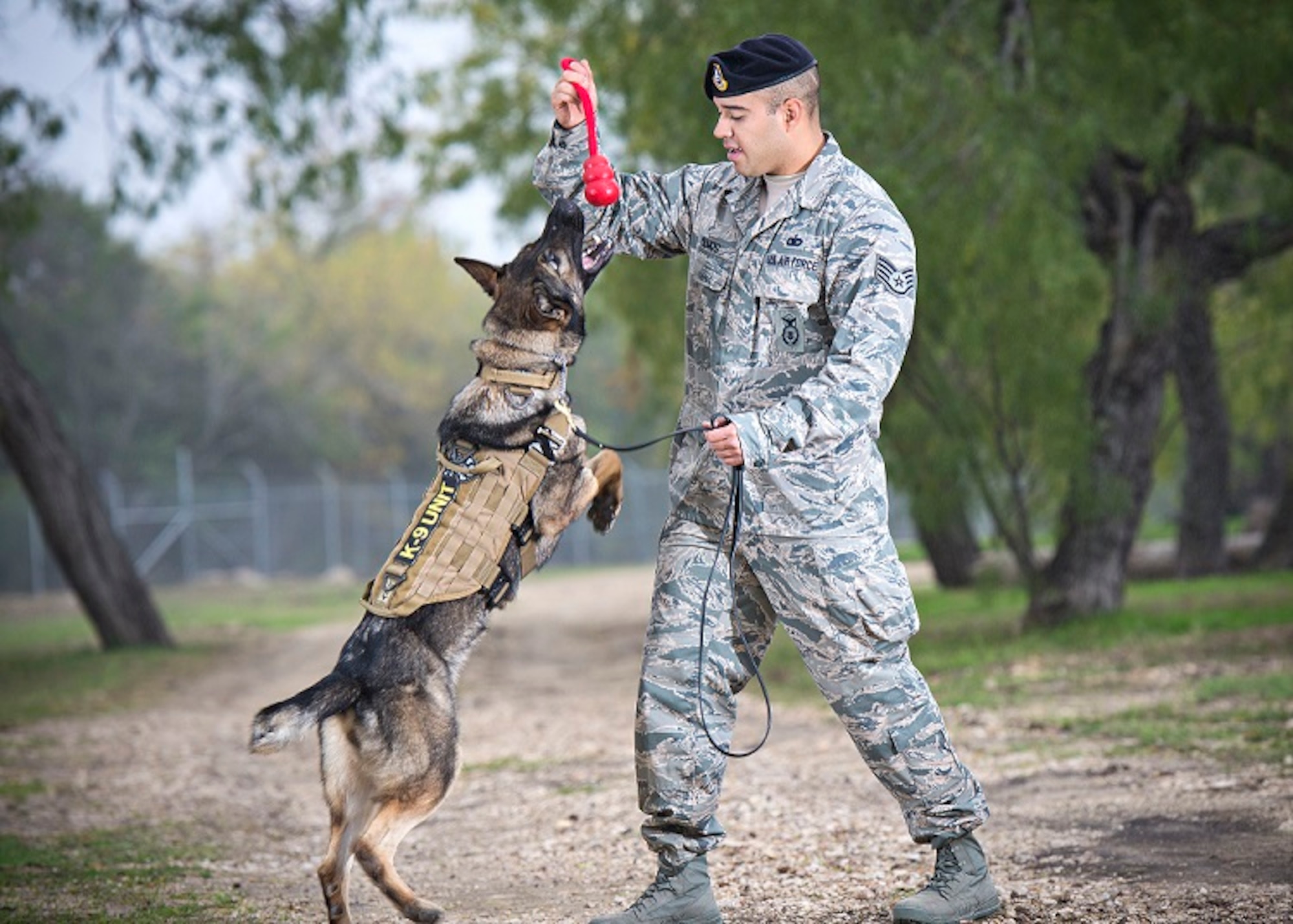Top Pet Dog Educating Strategies Every Owner Need To Know

Positive Reinforcement Techniques
Utilizing favorable reinforcement methods is essential for efficient pet training, as it cultivates a relying on bond between the trainer and the pet dog. This method focuses on gratifying desirable actions instead of penalizing undesirable ones, producing a setting favorable to learning. Benefits can include treats, praise, or playtime, which encourage pet dogs to duplicate the behaviors that gain them these benefits.

In addition, this method boosts the pet's enthusiasm for training sessions. When pets connect training with positive experiences, they are more engaged and responsive. Past prompt therapy, favorable support encourages a collaborative relationship in between the canine and trainer, reducing anxiousness and anxiety
To make best use of performance, it is vital to supply incentives promptly, ensuring the dog connects the behavior with the reinforcement. Fundamentally, positive support strategies not just produce better-trained pets yet additionally advertise a harmonious partnership in between canine and owner.
Remote Control Training Approach
The remote control training approach is a very reliable strategy that constructs upon the concepts of favorable support by adding an unique noise to mark wanted habits. This approach makes use of a tiny handheld gadget that creates a clicking noise, enabling fitness instructors to communicate with their pet dogs in a clear and instant manner. When a pet performs an actions that the proprietor wants to motivate, the clicker is triggered, adhered to by an incentive, normally in the type of treats or praise.
The secret to successful remote control training depends on consistency and timing. It is crucial to click at the precise minute the wanted behavior happens, making sure that the canine connects the audio with the activity and the succeeding incentive. This technique not only boosts interaction but also cultivates a stronger bond in between the pet and the proprietor, as it encourages involvement and communication during training sessions.
Remote control training can be put on a range of actions and commands, from fundamental obedience to more complicated techniques. Its convenience and performance make it a preferred method among professional trainers and pet dog proprietors alike, leading the way for a well-trained and receptive canine buddy.
Chain Training Fundamentals
Effective chain training is necessary for ensuring a risk-free and pleasurable strolling experience for both dogs and their owners. A flat collar might work for some this canines, while others may profit from a harness that reduces pulling.
Introduce your canine to the chain progressively, permitting them to discover it in a comfortable setting. This involves fulfilling your pet for strolling next to you rather than pulling ahead.
If your pet starts to draw, quit walking promptly. Wait up until they return to your side before returning to. This shows them that pulling does not result in proceed. In addition, method different walking atmospheres to assist your canine adapt to disturbances.
Normal practice will certainly strengthen your canine's understanding of chain rules. Bear in mind that chain training is an ongoing process; persistence and uniformity will generate the finest outcomes, fostering a positive experience for both you and your canine companion.
Socialization Methods
Socialization is a critical facet of pet dog training that need to preferably start throughout puppyhood yet can be useful at any age. Efficient socializing helps dogs develop self-confidence and lowers the probability of behavior issues. To apply effective socializing techniques, subject your canine to a range of settings, people, and various other animals.
Begin with regulated settings, such as young puppy courses or organized playgroups, where young more tips here pet dogs can engage securely. Slowly introduce your pet dog to brand-new experiences, including different sounds, surface areas, and activities. Make certain these encounters are gratifying and favorable to develop a complacency.
For grown-up canines or those doing not have direct exposure, begin with low-stress scenarios. Short, favorable interactions with tranquil canines and friendly human beings can create favorable organizations. Use treats and appreciation to reinforce desirable behaviors during these experiences.

Consistency and Patience
Recognizing the value of uniformity and patience in canine training is crucial for achieving long lasting results. Irregular training can lead to complication, making it difficult for the canine to comprehend actions or commands, eventually impeding development.
Furthermore, perseverance is an important part of effective training. Pet dogs, like humans, learn at their own speed. Some may comprehend concepts rapidly, while others could take longer. It is essential for owners to stay helpful and tranquil, strengthening positive actions without resorting to aggravation or penalty. This cultivates a trusting partnership between the pet dog and owner, urging a much more prepared and enthusiastic student.
To grow consistency and persistence, develop a routine training routine, use the same commands, and make sure that all household participants use the very same training principles - Dog training. By doing so, you create a secure atmosphere favorable to learning, allowing your dog to thrive and create right into a mannerly friend
Verdict
To conclude, reliable pet dog training methods, such as positive reinforcement, clicker training, and correct leash training, are vital for fostering a healthy and balanced owner-dog partnership. Furthermore, executing socialization approaches and preserving consistency and perseverance throughout the training process adds substantially to a canine's Going Here overall health. By integrating these approaches, canine proprietors can assist in the development of well-adjusted, loyal animals, inevitably improving the quality of life for both the proprietor and the dog.
Amongst the most prominent approaches are positive support, clicker training, and leash training, each offering one-of-a-kind benefits that add to a well-behaved pet dog. As we explore these basic approaches, it ends up being noticeable that grasping their subtleties can significantly affect the training experience and the dog's general actions.Utilizing positive support strategies is vital for reliable dog training, as it promotes a relying on bond between the dog and the fitness instructor.In verdict, effective canine training methods, such as favorable support, clicker training, and proper leash training, are necessary for fostering a healthy owner-dog connection. By integrating these approaches, canine proprietors can promote the growth of well-adjusted, loyal pet dogs, inevitably boosting the top quality of life for both the owner and the dog.